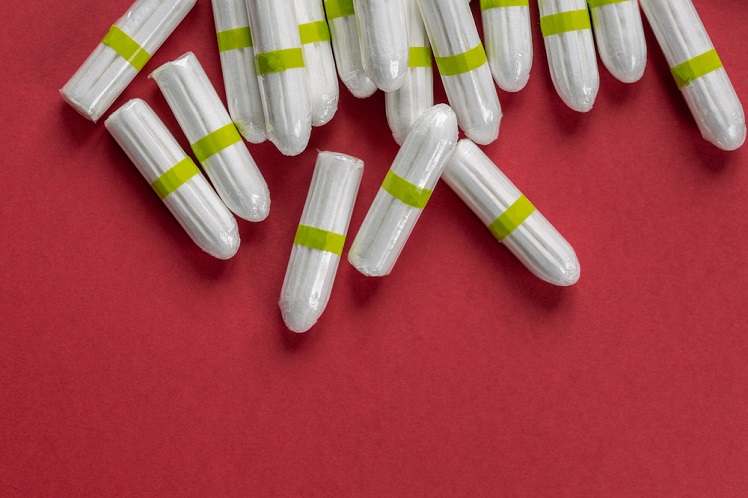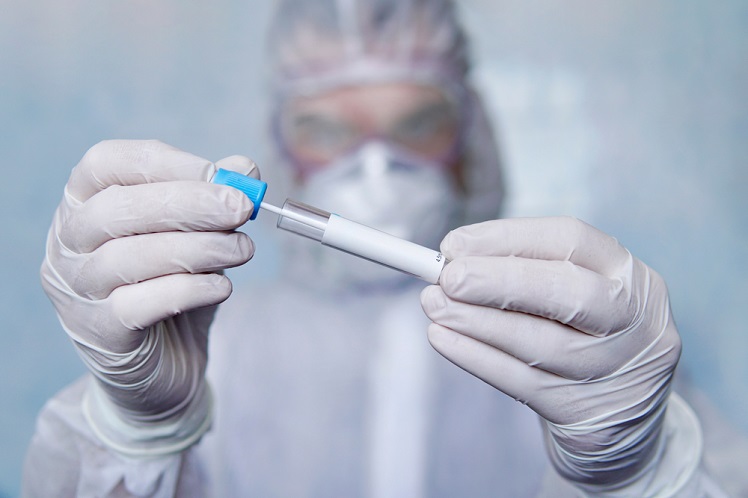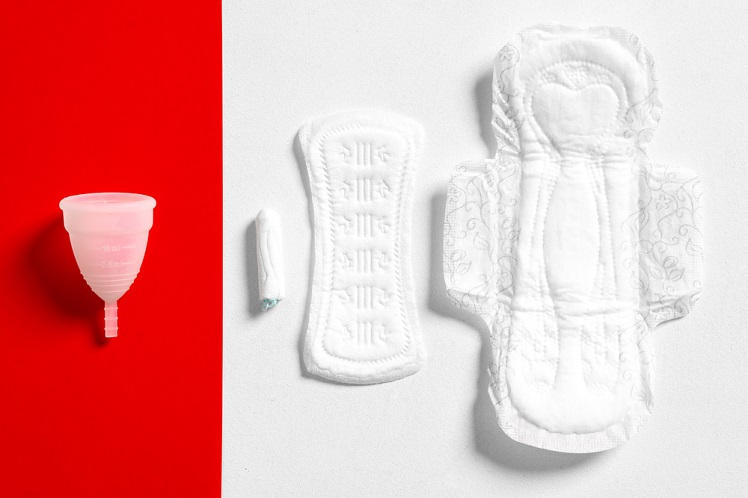It should be wrapped in toilet paper or a sanitary bag and disposed of in the trash. It’s important not to flush tampons down the toilet, as they can cause blockages and environmental issues.
Tampons are an essential item for many women, but disposing of them properly can be a tricky process. Tampons contain absorbent materials that can take years to break down in landfills, and flushing them down the toilet can cause clogging issues. Knowing how to properly dispose of tampons can help reduce your environmental impact and keep your plumbing in good shape. With the right approach, you can dispose of your tampons responsibly.
Did you know that, if not disposed of properly, tampons can cause contamination and potential health risks? In order to protect both the environment and our health, it is important to know how to dispose of tampons correctly.
In this article, we will discuss the best ways to dispose of tampons properly, including the most eco-friendly and safe options. Therefore, you can help protect the environment and your health when it comes to disposing of your tampons.
Key Takeaways
- Tampons should never be flushed down the toilet.
- Proper disposal is in the trash.
- Wrapping them in toilet paper or a sanitary bag is recommended.
- Flushing tampons can cause plumbing blockages and environmental issues.
- Being aware of sanitary product disposal is important for environmental health.
Table of Contents
What is Tampons?
Tampons are small, cylindrical objects made of cotton or other absorbent material that are used to absorb menstrual flow when inserted into the vagina. They are a popular choice among women who prefer a more discreet and hassle-free way to manage their periods.
Let’s take a look at the following paragraphs to get to know more about tampons.
1. What are Tampons Made of?
Tampons are typically made of a combination of rayon and/or cotton, with a plastic or cardboard applicator. Some tampons may also contain additional ingredients such as fragrance, lotion or chlorine bleach.

Here are different types of tampons according to the materials they made of:
1. Cotton
Most tampons are made from cotton, which is a natural material that is soft, absorbent, and breathable. However, they are not as absorbent as other materials such as rayon. Cotton tampons can be more prone to leaking than other materials.
2. Rayon
Some tampons are made from rayon, a synthetic material that is more absorbent than cotton. Rayon tampons are highly absorbent and can absorb more menstrual fluid than other materials. However, rayon tampons can contain chemicals or fragrances which can cause irritation or discomfort. It is possible to experience Toxic Shock Syndrome (TSS) if a tampon is left in for too long or is not changed frequently enough.
3. Polyester
Some tampons are made from polyester, a synthetic material that is more absorbent than cotton and rayon. They are easy to use and can be more discreet than other forms of menstrual protection, they are comfortable and can be worn for up to 8 hours, and they don’t cause irritation like some other forms of menstrual protection. However, they may be uncomfortable to insert and they can be difficult to dispose of properly.
4. Organic
Some tampons are made from organic materials, such as sea sponge, bamboo, hemp, and corn. These materials are more environmentally friendly than other materials. However, organic tampons can be more expensive than conventional tampons. Organic tampons may not offer as much absorbency as conventional tampons.
2. Harmful Chemical in Tampons
The most concerning chemical found in tampons is dioxin, a byproduct of the bleaching process. Dioxin has been linked to reproductive and developmental issues, as well as cancer and other serious health issues. Therefore, some natural and organic tampons are made without chlorine bleaching, so they do not contain dioxin.
Other volatile organic substances, such as the carcinogen methylene chloride and the reproductive poisons toluene and xylene, were also present in some kinds of tampons. Methylene chloride, a chemical frequently found in paint strippers, has lately made headlines due to its connection to more than 50 fatalities since 1980.
3. What Does Using Expired Tampons Do?
Using expired tampons can cause a number of health risks. These risks include an increased risk of Toxic Shock Syndrome (TSS), an infection caused by a toxin-producing strain of bacteria. According to the study case from Cleveland Clinic, TSS is brought on by specific bacterial strains, Staphylococcus aureus.
The disorder can lead to liver, heart, and lung failure. Expired tampons can also cause vaginal irritation and an increased risk of infection. Therefore we recommend you to always use tampons that are within their expiration date for the best result.
Moreover, itching and an increase in vaginal discharge are two symptoms that might result from using an expired moldy tampon. However, as the vagina returns to its normal pH (potential of hydrogen) levels following your period, this should go away on its own.
Consult your doctor if your symptoms persist for more than a few days.
4. How Many Tampons We are Using?
It is difficult to estimate the amount of plastic trash generated by menstrual hygiene products. It’s because menstrual hygiene waste is classified as medical garbage and is exempt from tracking requirements, and in part because so little research has ever considered the size of the issue.
The average American woman will menstruate for around 40 years in total, bleeding for about five days per month, or 2,400 days in total—roughly six and a half years—during her lifetime.

In 2018, Americans alone purchased 5.8 billion tampons. According to Nationalgeographic, a single woman will use between 5 and 15 thousand pads and tampons over the course of a lifetime, the bulk of which will end up in landfills as plastic trash.
5. Are Tampons Recyclable?
Unfortunately, tampons are not recyclable. Tampons are not recyclable because they are made of a combination of cotton and rayon fibers, which cannot be separated and processed in recycling centers. Moreover, tampons also often contain plastic applicators, which are difficult to recycle.
In addition, tampons cannot be processed by standard city or rural recycling systems because they have come into touch with blood, which is regarded as human waste. Unless they are made of recyclable material, tampons are not recyclable.
There are eco-friendly tampon alternatives including reusable cloth pads, menstrual cups, menstrual discs, period underwear, and even menstruation sea sponges. To recycle unused tampons, seal them and use a compostable garbage bag.
How Long Does Tampons Take to Decompose?
Tampons take years to decompose because they are made of a combination of rayon, cotton, and various other materials. It can take anywhere between 500 and 800 years for a tampon to decompose. The materials used to make tampons are designed to be absorbent and durable, so they do not decompose quickly.
Additionally, they are often discarded in landfills, where they may not get enough sunlight, oxygen, and moisture to break down quickly.

Meanwhile, 100% cotton tampons take five to six months to break down in a compost pile. Although the speed might vary based on the material, temperature, and moisture content of your compost container. This natural and organic tampon is classified as brown compost.
Tampons Environmental Problems
A single woman may spend thousands of tampons in her lifetime. Can you imagine how many tampons are disposed of in landfill every year? It will definitely cause environmental problems. Let us explain more about environmental issues caused by tampons in the following points.
1. Large Waste Amount Production
Since tampons are not recyclable, they create a large amount of waste. Every month, millions of women around the world use tampons, creating a large amount of single-use waste that can end up in landfills or oceans. It takes years for disposal of menstrual products and causes bigger landfill and ocean problems.
2. Harmful Chemicals Contamination
Tampons can contain harmful chemicals. Traditional tampons can contain chemicals such as dioxins and chlorine, which are known to be toxic to humans. As tampons end up in waterways, the harmful chemicals may contaminate the drinking water.
Expired tampons may also cause skin irritation.

3. Toxic Shock Syndrome
Tampons can increase the risk of toxic shock syndrome. It is brought on by the excess of the bacterium staphylococcus aureus, which releases toxins into the body. Women who are menstruating, especially those who use super-absorbent tampons, are susceptible to toxic shock syndrome.
Toxic shock syndrome may cause flu-like symptoms, such as a headache, feeling cold, feeling tired or exhausted, an aching body, a sore throat and a cough.
4. Unsustainable Resources
Tampons are made from unsustainable materials. The majority of tampons are made from rayon and cotton, both of which are derived from unsustainable and non-renewable resources. Climate change, biodiversity loss, and pollution are the three global crises we are currently confronting as a result of the environmental effects of unsustainable consumption and production.
The Right Ways on How to Dispose Tampons
As a responsible Ecomaniac, you should know the best ways to dispose of tampons carefully to avoid bigger environmental problems. Therefore, we will explain simple and easy tips on how to dispose of tampons responsibly without harming the environment. Let’s jump to the list!
- Wrap the tampon in toilet paper and place it in a trash can.
- Place the tampons in tampon disposal bags. After that, you can throw away tampons in the trash.
- Dispose of the tampon in a designated sanitary disposal bin.
- Place the tampon in a paper bag or envelope before throwing it away.
- Flush the tampon down the toilet if it is made from 100% biodegradable tampon materials.
- Dispose of the tampon in a safe and hygienic way by using a tampon disposal system.

1. Dispose Tampons When Camping
When camping, it is important to properly dispose of used tampons in order to maintain hygiene and prevent the spread of germs and bacteria. To do this, we will give you some tips and tricks on how to dispose of tampons when camping without harming the wildlife. Let’s get started!
- Start making a tampon wrap by wrapping the used tampon in toilet paper.
- Then, bury the tampon in a hole at least 6 inches deep away from any water sources.
- Finally, cover the hole with dirt and sanitize your hands.
2. Dispose Tampons Without Smell
We don’t want your menstrual hygiene waste to leave an undesirable smell after being disposed of. Therefore, you can follow these tips on how to dispose of tampons without smell. Let’s check this out!
- Wrap used tampons in toilet paper before disposing of them in the trash.
- Place used tampons in sealed tampon disposal bags. Then, throw away tampons in the trash.
- Dispose of used tampons in a sealed container with a lid, such as an old milk or ice cream container. After that you can dispose of the tampon wrap in the trash.
- Store used tampons in the refrigerator or in a cool, dry place to prevent any odor from developing.
- Use a product specifically designed to eliminate odors from tampons, such as a scented spray or gel.
Tampons Environmentally Friendly Alternatives
There are numerous environmentally friendly sanitary products alternatives to conventional tampons as awareness of green choices rises. If you are going to switch your regular tampons to the eco-friendly one, we will explain some environmentally friendly sanitary products for your reference.

1. Menstrual Cups
Menstrual cups are a reusable and eco-friendly alternative to tampons. They are made of medical-grade silicone, which is non-toxic and free of dyes and fragrances. They can be worn for up to 12 hours and are easy to clean and reuse.
The best menstrual cup brands are DivaCup, Lunette, and Ruby Cup. Each of these brands offers a variety of sizes and styles to fit your individual needs. Additionally, all three brands use medical grade silicone that is safe for your body and the environment.
2. Reusable Cloth Pads
Reusable cloth pads are made of soft, absorbent material like cotton or bamboo. They are easy to clean, and can be reused for up to several years. There are many great brands of reusable cloth pads available, and the best one for you will depend on your personal preferences and budget.
Some of the most popular brands include Lunapads, GladRags, Bumblito, and Thinx.
3. Period Underwear
Period underwear are a great alternative to tampons and pads. They are made of absorbent material and have extra layers that help to protect your clothing from leaks. They are comfortable and can be worn for up to 8 hours.
The best period underwear brand will depend on the individual and their preferences. Some popular brands to consider include THINX, Knix, Dear Kate, Modibodi, and Aisle.
4. Sea Sponge Tampons
Sea sponge tampons are a natural and eco-friendly option for tampons. They are made from natural sea sponges and are biodegradable. These biodegradable tampons are easy to use and can be reused for up to several months. Some popular sea sponge tampon brands include Pure Sponges and Natracare.
Final Thought
When disposing of tampons, it is important to be mindful of the environment. It is best to wrap the used tampon in toilet paper or a tissue before discarding it in a recycling bin, as this will help keep it from clogging pipes or polluting the environment.
Additionally, choosing biodegradable and eco-friendly tampons is a great way to reduce the environmental impact of period hygiene products. Hopefully, our article will give you fruitful insights to be a responsible Ecomaniac!
Latest Posts:
- Bioplastic Pros and Cons: An Unbiased Examination
- Eco-Friendly Bottling: Aluminum as the Sustainable Hero?
- How to Make Bioplastic from Rice: A Step-by-Step Guide
- Eco-Tips: How to Recycle Amazon Envelopes?
- What Does Compostable Mean?
FAQs (Frequently Asked Questions)
Are tampons more hygienic than pads?
Yes, tampons are generally considered to be more hygienic than pads because they are inserted into the body and create a physical barrier between the body and any external bacteria or contaminants. They also absorb more liquid than pads, which helps to keep the area dry and reduce the risk of irritation or infection.
Is it OK to flush tampons down the toilet?
No, it is not OK to flush tampons down the toilet. Tampons can cause blockages in household plumbing and sewage systems. Tampons can clog pipes, which can result in sewage backflow, which poses a health risk and requires pricey repairs.
Used tampons are typically wrapped in toilet paper or face tissue before being disposed of.
What to do with a tampon if there is no bin?
If there is no recycling bin available, wrap the tampon in toilet paper and dispose of it in a restroom trash can when one becomes available. Or, you can use a self-sealing disposal garbage bag. It will prevent you from transferring bodily fluids to someone else.
Additionally, period disposal bags allow you to dispose of a tampon at a friend’s house without being ashamed of what’s inside.
